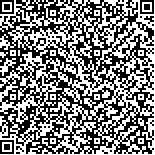Archive > Volume 42 Issue 11 > 2016,42(11):1342-1350. DOI:10.7519/j.issn.1000-0526.2016.11.006 Prev Next
Intraseasonal Variation Characteristics of Summer Precipitation over Tibet and the Corresponding LargeScale Circulation Anomalies
- Article
- Figures
- Metrics
- Preview PDF
- Reference
- Related
- Cited by
- Materials
Abstract:
Based on the summer precipitation data over Tibet and monthly NCEP/NCAR reanalysis data during the period from 1980 to 2013, we analyzed the intraseasonal variation of summer precipitation principal mode, especially the largescale circulation features of corresponding precipitation anomalies in July and August. The results show that obvious intraseasonal variation exists in summer rainfall over Tibet. The correlation coefficient of PC1 between June and July principal mode is significant while weak between July and August. In morerain years, the upstream zonal wind of the Tibetan Plateau is westerly anomaly in July and August but the moisture water vapours come from different regions. And the upper troposphere circulation in the midhigh latitude over Eurasia in July and August is different significantly. Further research shows a strong negative correlation between precipitation and the intensity of South Asian high (SAH) in July, which means morerain/lessrain in July, SAH is weaker/stronger. In August, there is a strong correlation between precipitation and the position of SAH. That is, SAH southward/northward to its normal position may lead to flood/drought over Tibet in August.
Keywords:
Project Supported:
Clc Number:


Mobile website









